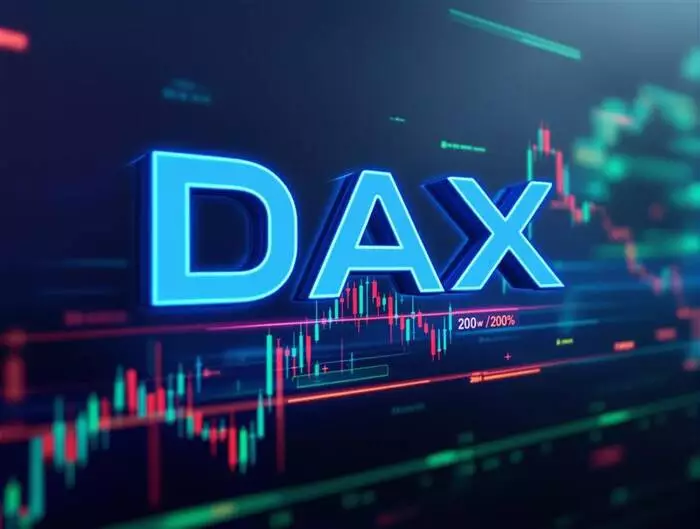In the intricate dance of financial markets, macroeconomic indicators serve as vital indicators of future trends. One such figure, the unemployment rate within the Eurozone, holds substantial sway over investor sentiment and central bank policies. The upcoming release of Eurozone unemployment figures for May exemplifies this influence. Economists are collectively forecasting a stable rate at 6.2%, which, while seemingly uneventful, carries profound implications. A steady or declining unemployment statistic can bolster confidence in the region’s economic resilience, potentially persuading the European Central Bank (ECB) to hold off on adjusting interest rates. Conversely, any uptick in unemployment might serve as a warning sign, prompting policymakers to consider easing measures to stimulate growth.
Such data points are not just numbers; they are market catalysts. A reassuring unemployment figure could embolden investors to elevate their risk appetite, propelling stocks like those in the DAX upward. However, if the data hint at economic fragility, risk-averse behavior may intensify, driving assets into safer havens. The interpretation of these figures is further complicated by external factors such as trade tensions and tariffs, which can distort the underlying economic outlook and thus influence market reactions beyond raw data. In this environment of uncertainty, the emphasis on trade development remains paramount, overshadowing even crucial labor statistics in determining investor mood.
The Fed’s Balancing Act and Its Impact on Global Markets
Across the Atlantic, the Federal Reserve’s posture on interest rates continues to be a focal point for global markets. After a tumultuous period marked by speculation about rate cuts, Fed Chair Jerome Powell’s recent comments injected a cautious optimism balanced against uncertainty. Powell made it clear that the Fed is in a ‘watchful’ state, watching inflation trends and employment signals with heightened scrutiny. His remarks reveal an evolving stance—neither dovish nor hawkish, but rather adaptable—reflecting the delicate equilibrium the Fed seeks to maintain.
Markets have responded by fluctuating expectations for when a rate cut might occur, with the probability of a September adjustment still remarkably high. However, the forthcoming US jobs report looms large, and investors are scrambling to interpret its potential impact. Robust employment growth could reinforce the Fed’s patience, possibly delaying rate cuts, which might weigh on riskier assets like stocks. Conversely, softer labor data could expedite rate cut expectations and stimulate a rally in equities, including the DAX. The nuanced language from Powell underscores a central bank that remains vigilant but not committed, making each economic data point a potentially decisive factor in shaping monetary policy.
This balancing act underscores the interconnectedness of global markets. A stronger US job report may strengthen the dollar and dampen European equities, while weaker data could trigger risk-on sentiment worldwide. Markets are poised to react sensitively, emphasizing the importance of both hard data and the softer cues from central bank officials.
The DAX’s Path: Navigating Optimism and Risk
The DAX index, reflecting Europe’s economic climate, stands at a crossroads, heavily influenced by both US economic signals and overarching geopolitical developments. Futures markets as of July 2 suggest a cautiously optimistic outlook, with the index poised to ascend toward recent highs if positive sentiment prevails. Technical indicators bolster this outlook, as the index remains above its key moving averages, signaling underlying bullish momentum.
Nevertheless, the market’s near-term trajectory hinges on several pivotal factors. On the upside, a potential US-EU trade agreement, coupled with softer US employment figures and dovish central bank communications, could unleash buying momentum, propelling the DAX toward 24,000 and beyond. This scenario might encourage sustained bullish behavior, pushing the index into territory near its June highs.
However, downside risks are equally compelling. Stalled trade negotiations, resilient US economic data, or hawkish hints from the Federal Reserve could sap investor confidence, leading the DAX toward support levels around its 50-day moving average and possibly retesting the 23,000 mark. A breakdown below this level would raise concerns of renewed bearish momentum, exposing the index to further declines.
The current technical outlook, including the RSI reading just above 50, suggests some room for upward movement before overbought conditions emerge. Still, market participants must remain alert for sudden shifts driven by macroeconomic surprises or geopolitical developments, which could redraw the risk landscape overnight. The delicate interplay of these factors underscores the importance of comprehensive market analysis—beyond headline figures—to anticipate potential breakthroughs or setbacks in the DAX’s journey.
In essence, the market’s future hinges on a web of interrelated economic signals and policy cues. Whether positivity is sustained or risks escalate depends on a complex combination of data releases, diplomatic negotiations, and central bank rhetoric, making cautious optimism the most prudent stance for investors navigating these turbulent yet opportunity-rich waters.

